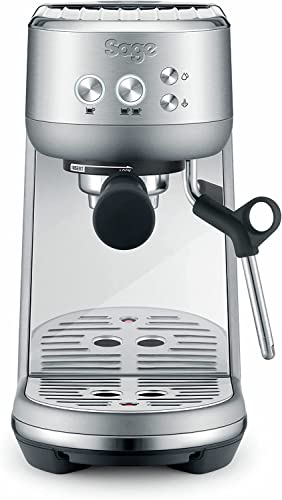How to Build a Professional Espresso Machine

For cafes and coffee shops that want to attract customers with a passion for barista and espresso, this is an excellent choice. It's the official machine for World Barista Championships, and it demonstrates.
It has a water reservoir to ensure that the barista only has to refill it during their shift. The machine has a tea hot water tap and steam wands that cool-touch.
Water
A commercial espresso machine needs to be able to make an enormous amount of espresso-based drinks efficiently. They are typically made of stainless steel, which is durable and resistant to breakages and scratches. These espresso machines are easy to maintain and clean.
Finally, a high-quality machine has a shut off valve for the water line to avoid the buildup of limescale. This will ensure that any repairs will be isolated to the affected parts of the machine and won't impact the rest of your operation.
Test your water to ensure it is treated properly. For instance distillate water can be recycled by adding a small amount of minerals back into it. This could reduce its erosion properties and improve its taste, but it may also damage machines. This is because the remineralized water will cause the boiler sensor to believe that the machine is full, even though it is not. This can cause the machine to overheat and be damaged.
Grinder
The grinder is a key component of the success of an espresso machine. It is a process that takes a raw, unground bean and turns it into finely ground coffee that can then be placed into the filter basket to create an excellent extraction.
Commercial-grade professional espresso machines usually have a built-in grinding unit that can be programmed to grind for different sizes of drinks, ensuring the same results every time. Super-automatic machines go a step further and automate the entire process, from brewing to grinding and dispensing. These types of machines typically get high marks in Lab tests for their hands-off ease of use.
Semi-automatic and manual machines require more effort from the barista, but the results are worth the effort. This model won a Good Housekeeping Coffee Award in 2022 for its smart dosing system that measures and distributes the right amount of coffee each time. It also comes with a low-pressure pre-infusion mechanism for well-balanced extraction as well as a milk frothing wand that excelled in our test for producing rich, thick steamed milk.
Temperature
Temperature is a key aspect in espresso. If the temperature of your water is not at the right level, it may cause extraction to be impeded and even result in an unpleasant cup.
Fortunately, top-quality espresso machines come with tools that will allow you to keep your water at the correct temperature. A PID monitors and regulates the temperature of water. Double boiler systems are a different way to achieve this. This lets you utilize one boiler for tea and steam and the other one to heat water to brew temperatures.
Carles explains how these systems can be beneficial for both large businesses and baristas working from home. They can aid novices get the perfect espresso shot because they can maintain the exact temperature and prevent numerous variables that could affect the flavor quality. It helps experienced baristas to create their shots exactly as they want them.
Pressure
The pressure that the espresso machine makes use of can affect the quality of coffee it makes. see it here have noticed that their drinks taste different depending on the pressure they use, even if all other elements remain the same.
In general, most commercial-grade machines use nine bars of pressure to brew espresso. These machines are also likely to be pump-driven, not steam-driven. Although higher-pressure machines are also available however they require a group head that is more intricate to handle the higher levels of pressure.
While you may find espresso machines advertising 15 or even 18 bars of pressure, nine bars is generally considered to be the gold standard for consistently excellent espressos. These machines with higher pressure are typically less expensive and designed for home use.
To put 9 bars of pressure in perspective, it's more than four times the amount of pressure which is emitted by the air in your car tire. The greater pressure a professional espresso maker can apply, the better at capturing the flavor of the coffee beans you love. For this reason, it's worth investing in a high-end machine that can give you the best results.
Barista Skills
A barista must be able to handle orders quickly and accurately. This is especially crucial in busy times in the coffee shop. Good customer service skills are essential for building relationships with customers as well as increasing the sales of the coffee shop. This includes acknowledging regular customers, working effectively to resolve problems and being positive and helpful even in challenging circumstances.
A strong ability to multitask is usually required for baristas as they may have to take orders as well as operate the cash register and then communicate orders to coworkers and handle calls at the same time. This skill allows the customer to enjoy a pleasant experience in the cafe by making sure that orders are delivered quickly.
It is important for a barista to be aware of the different styles of drinks that can be made by an espresso machine. This can be gained through studying the various types of coffee, attempting them out in person, or watching videos on the internet. Many baristas prefer to attend classes on the matter, offered by several organizations.
